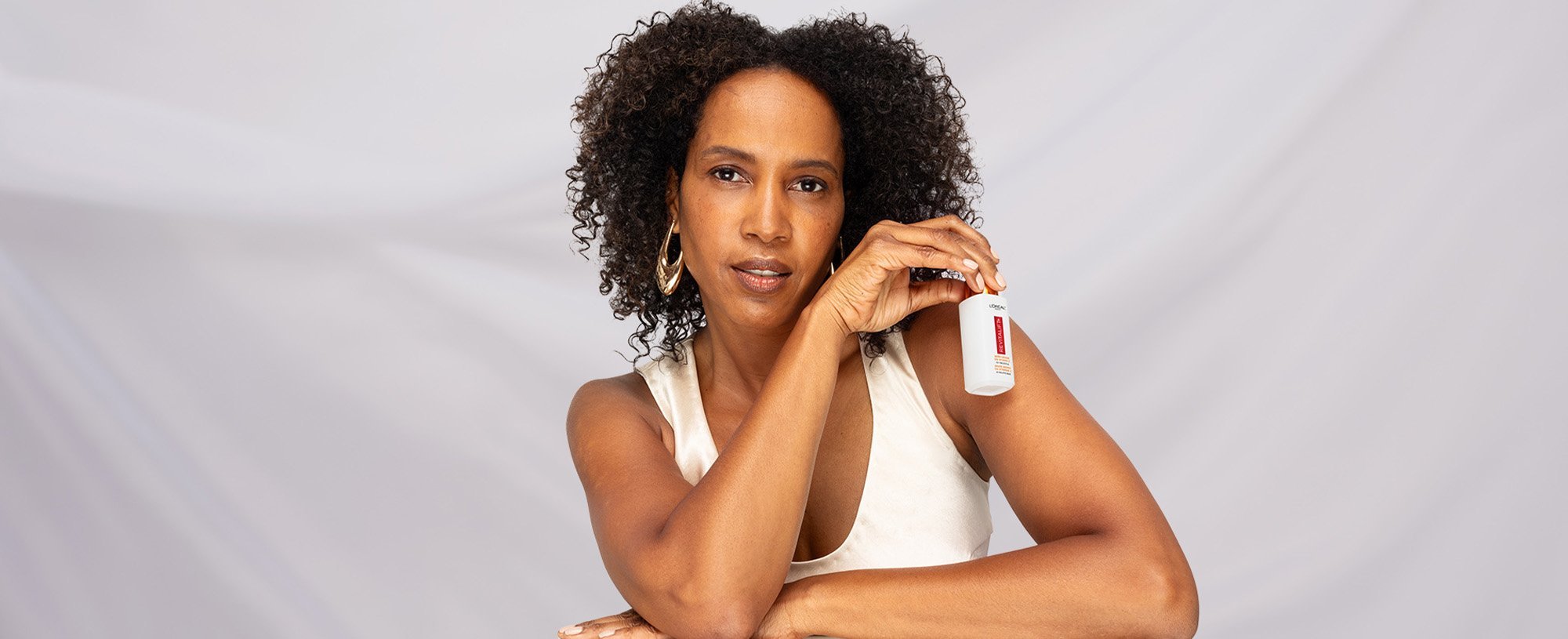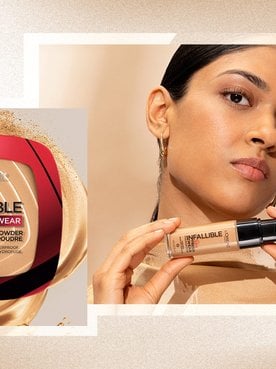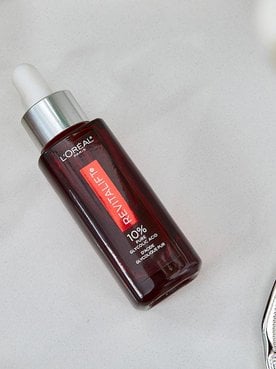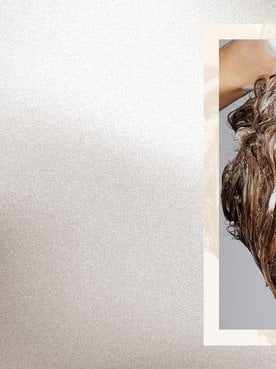If you’ve ever had to deal with blemishes, you have wondered: What do clogged pores look like? You are not alone. Clogged pores on the face are a common (and frustrating) skincare concern, and managing them can be tricky. The truth is, before even learning how to unclog pores, you’ll need to understand a few basics, starting with the answer to one important question: What causes clogged pores?
Here, we’re sharing what you should know about clogged pores, including what pores are, what causes clogged pores, and what congested skin looks like. Plus, we’ll share some of our top skincare tips for managing and reducing the appearance of clogged pores. Find it all ahead.
What Are Pores?
Pores are tiny openings on the surface of the skin that connect to sweat and oil glands located in the dermis (the middle layer of skin). They play an essential role in regulating temperature, releasing sweat, and allowing sebum (your skin’s natural oil) to keep the skin moisturized. While pores are found all over the body, they are most visible on the face, particularly in areas like the forehead, nose, and chin.
Because pores serve as natural channels for oil and sweat, they can easily become blocked by excess oil, dead skin cells, and bacteria. When this happens, you may notice dullness, breakouts, or rough skin texture. Genetics, age, and skincare habits all influence how visible your pores are, but everyone experiences pore clogging at some point. Understanding what do clogged pores look like is the first step in preventing them.
What Do Clogged Pores Look Like?
When dirt, oil, and dead skin cells build up inside your pores, it leads to congestion. Clogged pores are most noticeable on the face, but they can also occur anywhere oil glands are present. These blockages may appear in different ways depending on the type and severity of congestion. Common signs of clogged pores include uneven texture, tiny bumps, or small dark spots. Sometimes, what you think is a blackhead may simply be a sebaceous filament, which looks like a tiny yellow or gray dot but isn’t an actual blemish. Learning how to get rid of clogged pores depends on identifying these early signs.
Here are the main types so you can learn to identify them:
Whiteheads (closed comedones)
These clogged pores appear as flesh-toned or whitish raised bumps. They form when oil and dead skin cells are trapped beneath the skin’s surface, creating a closed pore.
Blackheads (open comedones)
These look like flat, dark brown or black specks. Contrary to popular belief, they’re not dirt. Instead, the dark color is caused by oxidized oil at the surface of a clogged pore.
Pimples and pustules
These red, inflamed bumps form when clogged pores become irritated. If the clogged pore contains pus, it appears as a white or yellow bump, commonly referred to as a pustule.
Nodules and cysts
These deeper, often painful breakouts develop under the skin’s surface. Nodules are firm, while cysts are pus-filled and can leave scars if picked or squeezed. This is where professional clogged pores treatment may be needed.
What’s the Difference Between Clogged Pores and Enlarged Pores?
Clogged pores and enlarged pores often look similar, but they’re not the same thing. Clogged pores occur when oil, bacteria, or dead skin cells get stuck inside the pore. Enlarged pores, on the other hand, are stretched-out pores that become more visible due to age, genetics, or lifestyle factors. Chronic congestion can make enlarged pores look worse over time.
Signs like uneven skin texture or a rough surface can indicate either clogged or enlarged pores. Here are some of the main causes of enlarged pores:
Excess oil
Areas like the T-zone, which produce more sebum, often have more noticeable pores. Extra oil can also mix with dead skin and bacteria, leading to congestion that makes pores appear wider. Keeping oil levels balanced with gentle cleansing and lightweight moisturizers can help minimize this effect and unclog pores before they become a problem.
Sun damage
Long-term sun exposure reduces skin elasticity, making pores look larger. When the skin loses collagen, it can’t bounce back as easily, so pores may look stretched. Daily use of broad-spectrum sunscreen helps maintain skin firmness and reduce the appearance of enlarged pores.
Aging
As skin naturally loses firmness, pores may appear stretched. Over time, reduced collagen and elastin production make skin less resilient. Supporting the skin with hydrating and firming products can help minimize this visible change.
Sex
People assigned male at birth often have more sebaceous glands, which can contribute to visibly larger pores. This natural predisposition means their skin may appear oilier and more textured. Consistent cleansing and non-comedogenic products can help keep skin balanced and reduce clogged pores on face.
Hormones
Hormonal fluctuations, such as those during puberty or menstruation, can increase oil production and make pores appear more noticeable. These fluctuations may also trigger breakouts, further emphasizing pore size. Maintaining a routine that balances oil and supports skin barrier health is key during these shifts.
What Causes Clogged Pores?
To prevent and treat congestion, it’s helpful to understand what leads to pore clogging in the first place. The most common causes include oil, dead skin, bacteria, harsh skincare practices, and even certain products. Addressing these causes is essential when learning how to unclog pores and keep skin clear.
1. Dead skin buildup
As dead skin cells accumulate, they can combine with oil and block pores. Exfoliating regularly helps prevent this buildup. Try the L’Oréal Paris RevitaLift Radiant Smoothing Cream Cleanser, which gently removes makeup, environmental impurities, and dead skin in a single step. It forms a rich lather that feels soft yet effective, helping your skin appear smoother, brighter, and more refined.
Also, try the L’Oréal Paris RevitaLift 10% Pure Glycolic Acid Serum. This daily resurfacing serum delivers exfoliating power with a 10% concentration of pure glycolic acid, recognized by dermatologists for its ability to even skin tone, reduce dark spots, smooth fine lines, and refine texture. These are great options to get rid of clogged pores safely.

2. Excess oil
When sebaceous glands produce too much sebum, the excess oil can trap dead skin cells and bacteria. This creates the perfect environment for clogged pores on face. People with oily or acne-prone skin often notice congestion on the forehead, nose, and chin. Clay masks and twice-daily cleansing can help balance oil levels and naturally unclog pores.
3. Over-cleansing and over-exfoliating
Cleansing and exfoliating are important, but too much can strip the skin barrier. This often triggers oil overproduction, which leads to even more congestion. Stick to cleansing twice daily and exfoliating one to two times a week, adjusting based on your skin’s needs. This balanced approach is one of the simplest forms of clogged pores treatment.
4. Using the wrong beauty products
Some skincare and makeup products contain ingredients that are comedogenic, meaning they can clog pores. Look for products labeled non-comedogenic and avoid heavy oils if you’re prone to breakouts. For lightweight coverage, try the L'Oréal Paris True Match Hyaluronic Tinted Serum or L’Oréal Paris Infallible Up to 24H Fresh Wear Foundation in a Powder, both designed to minimize pore clogging.
Shop the Products
What Are Pore-Clogging Ingredients?
If you’re prone to congestion, checking ingredient labels is essential. The term comedogenic simply means that an ingredient has the potential to clog pores. On the flip side, non-comedogenic products are designed to avoid this issue. Being mindful of ingredients is one of the best ways to know how to get rid of clogged pores before they worsen.
Some common pore-clogging ingredients include:
- Coconut oil
- Lanolin
- Avocado oil
- Kernel oil
To minimize congestion, opt for lightweight, non-comedogenic moisturizers. We recommend the L’Oréal Paris RevitaLift Micro Hyaluronic Acid + Ceramides Line-Plumping Water Cream, which offers a refreshing, non‑greasy feel while delivering deep hydration and visibly plumping fine lines. Its lightweight texture makes it ideal for all skin types, even oily and sensitive skin, as it absorbs quickly without clogging pores.

Also, try the L’Oréal Paris RevitaLift Triple Power Anti-Aging Moisturizer Fragrance-Free, which works for both day and night use. This unscented, dermatologist-tested moisturizer blends three high-impact, anti-aging ingredients, pro‑retinol, hyaluronic acid, and vitamin C, to visibly firm, brighten, and smooth your complexion. These are excellent choices if you're looking for clogged pores treatment options.
Shop the Products
How To Get Rid of Clogged Pores
So now that you know what do clogged pores look like and you’ve identified signs of clogged pores, the proper routine is the next step. With it, you can help reduce congestion and prevent future buildup. Here are some dermatologist-recommended strategies for how to unclog pores at home:
1. Double cleanse
Start your evening routine with an oil-based cleanser to dissolve makeup and sunscreen, followed by a gentle water-based cleanser. For a nourishing yet exfoliating option, try the L'Oréal Paris RevitaLift Radiant Smoothing Cream Cleanser, which smooths texture and leaves skin radiant. Consistency is key if you want to know how to get rid of clogged pores effectively.

2. Use products with salicylic acid or retinol
Salicylic acid helps break down oil, while retinol promotes cell turnover to keep pores clear. Add the L’Oréal Paris RevitaLift 12% Pure Vitamin C + E + Salicylic Acid Serum to your morning routine for brighter, smoother skin. It’s designed to visibly brighten, refine pores, and smooth fine lines while deeply nourishing skin without clogging pores.

For nighttime care, the L’Oréal Paris RevitaLift Pressed Night Moisturizer with Retinol + Niacinamide helps improve texture and minimize clogged pores on the face over time.
3. Moisturize
Hydration prevents oil overproduction and helps maintain a balanced skin barrier. Use a lightweight gel moisturizer, like the L’Oréal Paris RevitaLift Micro Hyaluronic Acid + Ceramides Line-Plumping Water Cream, to keep skin plump without clogging pores. Moisturizing daily also helps naturally unclog pores by supporting a healthy barrier.
Shop the Products
4. See a professional for extractions
If you have stubborn blackheads or whiteheads, resist the urge to squeeze them at home. Improper extractions can cause irritation, dark spots, or scarring. A dermatologist or licensed esthetician can perform safe extractions and recommend clogged pores treatment tailored to your needs.
5. Consult with your doctor
If clogged pores persist or turn into painful breakouts, it may be time to see a dermatologist. Prescription creams or oral medications may be necessary to properly manage your skin concerns and provide long-term solutions for clogged pores on the face.
Next Up: 8 Types of Facials to Treat Yourself With
Photo courtesy of L’Oréal Paris
Instagram: @drcindy_medical_aesthetics @body_lab_aesthetics







